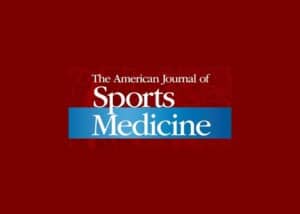
Background: Persistent clinical instability after anterior cruciate ligament (ACL) reconstruction may be associated with injury to the anterolateral structures and has led to renewed interest in anterolateral extra-articular procedures. The influence of these procedures on knee kinematics is controversial.
Purpose/Hypothesis: The purpose was to investigate the biomechanical properties of anatomic anterolateral ligament (ALL) reconstruction and a modified Lemaire procedure (lateral extra-articular tenodesis [LET]) in combination with ACL reconstruction as compared with isolated ACL reconstruction in the setting of deficient anterolateral structures (ALL and Kaplan fibers). It was hypothesized that both techniques would reduce tibial internal rotation when combined with ACL reconstruction in the setting of anterolateral structure deficiency.
Study Design: Controlled laboratory study.
Methods: A 6 degrees of freedom robotic system was used to assess tibial internal rotation, a simulated pivot-shift test, and anterior tibial translation in 10 paired fresh-frozen cadaveric knees. The following states were tested: intact; sectioned ACL, ALL, and Kaplan fibers; ACL reconstruction; and an anterolateral extra-articular procedure (various configurations of ALL reconstruction and LET). Knees within a pair were randomly assigned to either ALL reconstruction or LET with a graft tension of 20 N and a randomly assigned fixation angle (30° or 70°). ALL reconstruction was then repeated and secured with a graft tension of 40 N.
Results: In the setting of deficient anterolateral structures, ACL reconstruction was associated with significantly increased residual laxity for tibial internal rotation (up to 4°) and anterior translation (up to 2 mm) laxity as compared with the intact state. The addition of ALL reconstruction or LET after ACL reconstruction significantly reduced tibial internal rotation in most testing scenarios to values lower than the intact state (ie, overconstraint). Significantly greater reduction in laxity with internal rotation and pivot- shift testing was found with the LET procedure than ALL reconstruction when compared with the intact state. Combined with ACL reconstruction alone, both extra-articular procedures restored anterior tibial translation to values not significantly different from the intact state with most testing scenarios (usually within 1 mm).
Conclusion: Residual laxity was identified after isolated ACL reconstruction in the setting of ALL and Kaplan fiber deficiency, and the combination of ACL reconstruction in this setting with either ALL reconstruction or the modified Lemaire LET procedure resulted in significant reductions in tibiofemoral motion at most knee flexion angles, although overconstraint was also identified. ALL reconstruction and LET restored anterior tibial translation to intact values with most testing states.
Clinical Relevance: ALL reconstruction and lateral extra-articular tenodesis have been described in combination with intra-articular ACL reconstruction to address rotational laxity. This study demonstrated that both procedures resulted in significant reductions of tibial internal rotation versus the intact state independent of graft tension or fixation angle, although anterior tibial translation was generally restored to intact values. The influence of overconstraint with anterolateral knee reconstruction.
Full Article: Anterolateral Knee Extra-articular Stabilizers
